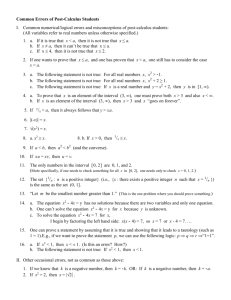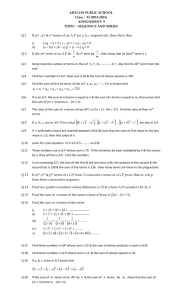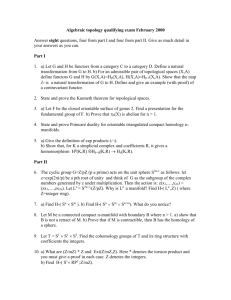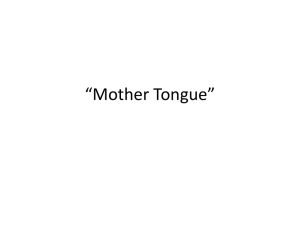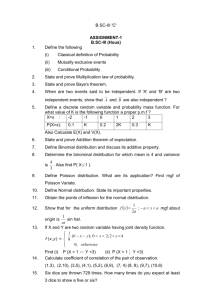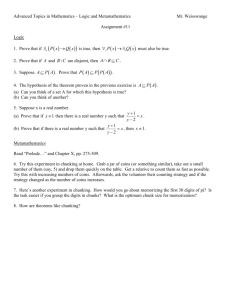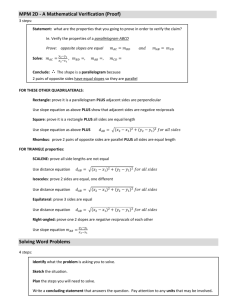MT 2811 - Loyola College
advertisement
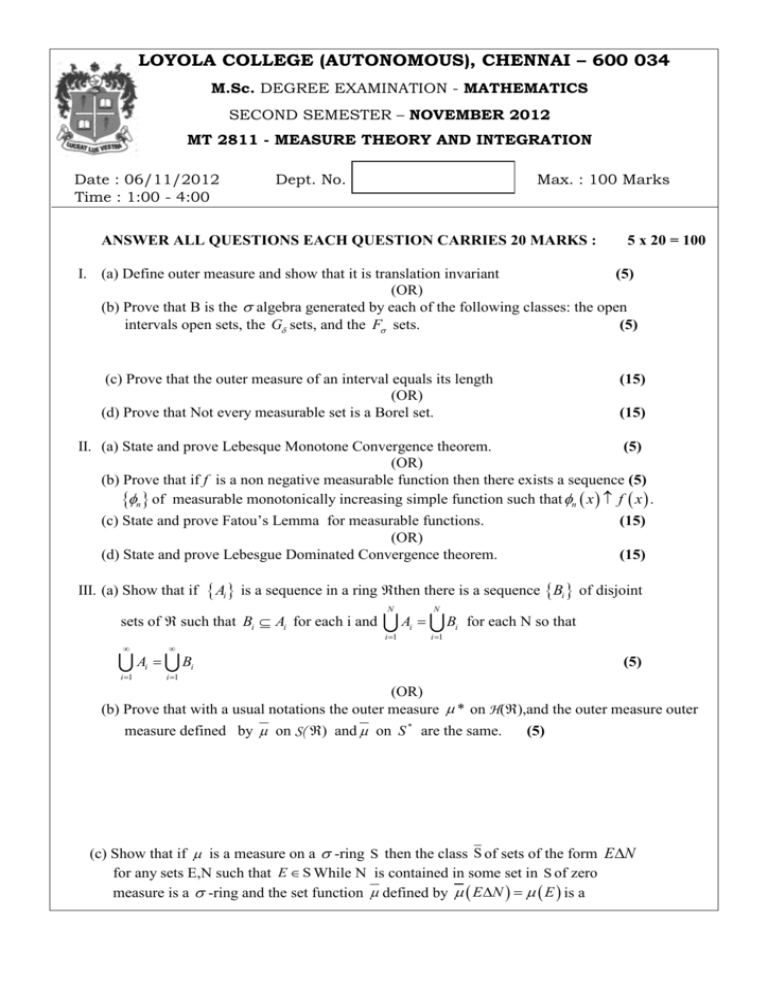
LOYOLA COLLEGE (AUTONOMOUS), CHENNAI – 600 034 M.Sc. DEGREE EXAMINATION - MATHEMATICS SECOND SEMESTER – NOVEMBER 2012 MT 2811 - MEASURE THEORY AND INTEGRATION Date : 06/11/2012 Time : 1:00 - 4:00 Dept. No. Max. : 100 Marks ANSWER ALL QUESTIONS EACH QUESTION CARRIES 20 MARKS : 5 x 20 = 100 I. (a) Define outer measure and show that it is translation invariant (5) (OR) (b) Prove that B is the algebra generated by each of the following classes: the open intervals open sets, the G sets, and the F sets. (5) (c) Prove that the outer measure of an interval equals its length (OR) (d) Prove that Not every measurable set is a Borel set. (15) (15) II. (a) State and prove Lebesque Monotone Convergence theorem. (5) (OR) (b) Prove that if f is a non negative measurable function then there exists a sequence (5) n of measurable monotonically increasing simple function such that n x f x . (c) State and prove Fatou’s Lemma for measurable functions. (OR) (d) State and prove Lebesgue Dominated Convergence theorem. III. (a) Show that if i 1 Ai (15) Ai is a sequence in a ring then there is a sequence Bi of disjoint sets of such that Bi Ai for each i and (15) N i 1 Ai N Bi for each N so that i 1 (5) Bi i 1 (OR) (b) Prove that with a usual notations the outer measure * on H(),and the outer measure outer measure defined by on S( and on S * are the same. (5) (c) Show that if is a measure on a -ring S then the class S of sets of the form EN for any sets E,N such that E S While N is contained in some set in S of zero measure is a -ring and the set function defined by EN E is a complete measure on S . (15) (OR) (d) Prove that if * is an outer measure on H(),. Let S * denote the class of * Measurable sets then Prove that s * is a - ring and * restricted to is a complete measure. (15) IV. (a) Prove that space is a vector space for . (5) (OR) (b) State and prove Minkowski’s inequality. (5) (c) State and prove Jensen’s inequality. Also prove that every function convex on an open interval is continuous. (15) (OR) (d) Prove that ( s, t ) ( s, u ) (t , u ) where is convex on (a, b) and a s t u b . Also ' prove that a differentiable function is convex on (a, b) if and only if is a monotone (15) increasing function. V. (a) Define the following terms: total variation, absolutely continuous, and mutually singular with respect to signed measure. (5) (OR) (b) Let v be a signed measure on [X, S]. Construct the measures v+ and v- on [X, S] such that v = v+ - v- and v+ ┴ v-. (5) (c) If , , and are - finite signed measure on [X, S] and v1 « , v 2 « then prove that d (v1 v 2 ) dv1 dv 2 [ ] . Also prove that a countable union of positive sets with respect to a signed d d d measure v is a positive set. (15) (OR) (d) State and prove Hahn decomposition theorem. (15)
